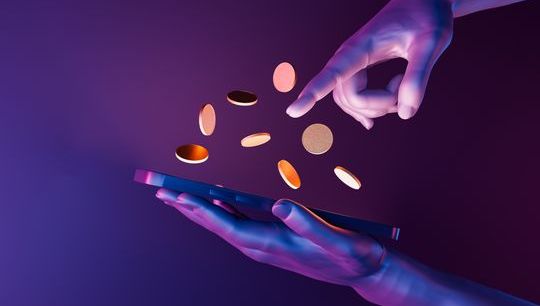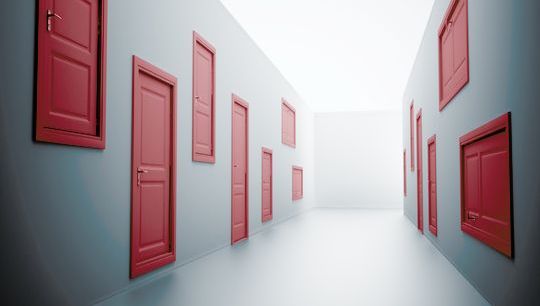Through a new lens: Evolving asset management regulation
By Darina Barrett, KPMG
Published: 20 September 2021
The past two years have fundamentally changed the way regulators approach key issues. The impact on alternative investment managers will be significant.
Recent market events in 2020 and ongoing concerns about stability in the capital markets are causing regulators to reassess risks and redefine resilience. Of paramount importance are the financing of a sustainable recovery and adjusting regulation for an increasingly digital world and hybrid working models.

However, regulation is also enabling new market opportunities. New fund vehicles are being introduced as jurisdictions compete for share of market growth, and newer capital markets are opening further to foreign investment and firms.
KPMG’s annual Evolving Asset Management Regulation report – Through a new lens – suggests that regulators are not only widening their focus on the hedge fund sector, they are also starting to look at the risks and benefits through a new, pandemic-tinted lens.
Sustainability to the fore
The issue currently at the top of regulator agendas is sustainable finance. Regulators are focused on sustainability risks, especially that of climate change. Investors – particularly sovereign wealth funds and large institutional investors – are increasingly asking managers and investment funds about their environmental, social and governance (ESG) credentials. Both regulators and investors are keen to see more data and more consistent reporting on the topic.1
The pace of this evolution remains mixed around the world, with the EU currently focusing on imposing detailed rules on asset owners and asset managers about their processes and regarding disclosures to investors and beneficiaries. Others are also moving quickly; regulators in other jurisdictions are now proposing new requirements, and supervisory scrutiny is increasing.
Regulating in a digital world
The pandemic served as a technological catalyst. Hedge fund managers moved quickly to digitise processes and adopt large-scale remote working. Policymakers accelerated their plans towards digital finance and the widening use of technology. That left regulators thinking about the new and emerging risks, as well as the benefits, of operating in a digital environment.
Perhaps not surprisingly, data and infrastructure are key focus points for regulators. In part, this is about protecting customer information and reducing bias in new technology-enabled models. But it is just as much about protecting market confidential information in an era where data often transfers between entities and across borders. Organizations like the International Organizations of Securities Commissions (IOSCO) are already hard at work assessing the risks of AI and machine learning on the securities and futures markets. Others are watching carefully.
Crypto-assets, an area of increasing activity for hedge fund managers, have also been a focus of regulators around the globe, with initiatives focused on the assets themselves, the trading of them, or both. The debate as to the role fund administrators should play regarding crypto-assets and digital currencies continue.
Reassessing the risk
While the hedge fund sector has remained broadly resilient, despite the extreme market conditions in living memory, regulators are keen to understand how the sector responded to the economic crisis that accompanied the pandemic.2
For the most part, their focus is on areas of less interest to hedge fund managers – open-ended funds, with bond funds, exchange-traded funds and real estate funds experiencing the greatest scrutiny. However, highly-leveraged funds are not out of sight for policymakers.
Sir Jon Cunliffe from the Bank of England recently spotlighted funds that undertake arbitrage trades on the price differences between the value of derivatives and the value of the cash instrument upon which the derivative is based. In ‘normal’ market conditions, these trades are generally viewed as important to stabilizing market prices. However, various pressures meant that some of these funds had to undertake massive sales of government bonds (almost US$90 billion during March 2020), causing further falls in bond prices.3
Exploring the risk landscape
Another imminent risk to capital markets stability is the likely demise of the widely-used London inter-bank offer rate (LIBOR) at the end of 2021 and the challenge of transitioning to risk-free rates . The Financial Stability Board is developing a roadmap that includes a smooth transition away from LIBOR to more robust benchmarks. The pressure is now on firms to implement transition plans.
The cost of and access to market data, and the need for consolidated market data is also in the spotlight. Several jurisdictions, including Australia, the EU and the US, are contemplating whether regulatory changes are necessary. Also, by end-2021, IOSCO will report on the findings of its thematic review of conduct-related issues in relation to index providers.
Other, newer risks are also rising up the regulator agenda for the hedge fund sector. Additional demands on systems and processes arising from prolonged and large-scale remote working, and an increasingly digital world, has increased the focus on firms’ technological resilience. The prevention of money laundering also remains high on the agenda, with new provisions and compliance requirements being promulgated in markets from Canada through to Saudi Arabia.
Reinforcing good governance
While governance has always been a headline topic for regulators and supervisors, the experience of the pandemic and ensuing economic volatility has catalysed supervisors to reinforce the need for good governance of firms, including board composition and engagement, clear management responsibilities and individual accountability.
Regulators suspect that traditional risk management, oversight and controls are being challenged by large-scale remote working. The trends towards sustainable investment strategies, alternative asset classes and digitalisation bring with them added complexity to business models and challenges to current operational processes.
Product governance is also under the spotlight, together with firms’ behaviour in the capital markets and stewardship of client assets.
Widening the investor pool
While much of the regulatory attention on investor protection is focused on the retail markets, Hedge Fund managers will note that some regulations are being eased for professional investors and regulated market counterparties. In the US, for example, the Securities and Exchanges Commission (SEC) adopted amendments in August 2020 to the definitions of accredited investors and qualified institutional buyers.
The amendments did not change the minimum income or wealth thresholds for individuals. But they did update and improve the definition of ‘accredited investor’ to more effectively identify investors that have sufficient knowledge and expertise to participate in investment opportunities, without all of the rigorous disclosure and procedural requirements (and related investor protections) provided by registration under the 1933 Securities Act.
For some hedge fund managers and alternative investment funds, this should lead to an opportunity to reach slightly different investor profiles than they would have been able to in the past, thereby potentially widening the investor pool.
Redrawing borders and products
Many jurisdictions continue to open their markets to overseas firms and investment, and more international financial recentres are being established. New or amended fund structures are being introduced to enable jurisdictions to compete with well-established fund domiciles.
KPMG’s recent Evolving Asset Management Regulation report devotes most of a chapter to identifying some of the key markets that are currently undertaking initiatives to make their markets more attractive places for fund managers to set up, manage and administer their funds. From the UK, Germany and Ireland through to Brazil, South Africa and China, the report notes increasing opportunities for hedge fund managers to expand and grow.
Through a new lens
Regulators and supervisors are looking at the hedge fund industry through a new lens. Fund managers must do the same. Indeed, KPMG’s Evolving Asset Management Regulation report comes to one defining conclusion: firms now need to reconsider all aspects of their business models to ensure they are fit for purpose in the evolving new reality.
To learn more about the evolving asset management regulatory environment, download KPMG’s most recent report.
Have you asked yourself…
- Do we have a clear, robust and nimble environmental, social and governance strategy, supported by our governance arrangements, risk management, investment process, data capabilities and disclosures?
- Are we identifying, measuring and managing risks arising from new technologies and increased digitalisation? Are we using technology effectively, to enhance client services and run our business more efficiently?
- Have we critically analysed experience during the 2020 market stress and reassessed liquidity risk management for each open-ended fund? Do our policies, controls and documentation meet supervisory expectations?
- Do we have effective board engagement and supporting governance arrangements? Are our risk management framework and controls fit-for-purpose given continued remote working? Are our product governance arrangements subject to robust and objective challenges, and delivering good customer outcomes?
References
- Evolving Asset Management Regulation, page 11. KPMG International 2021
- Evolving Asset Management Regulation, page 22. KPMG International 2021
- Jon Cunliffe: The impact of leveraged investors on market liquidity and financial stability (bis.org)








